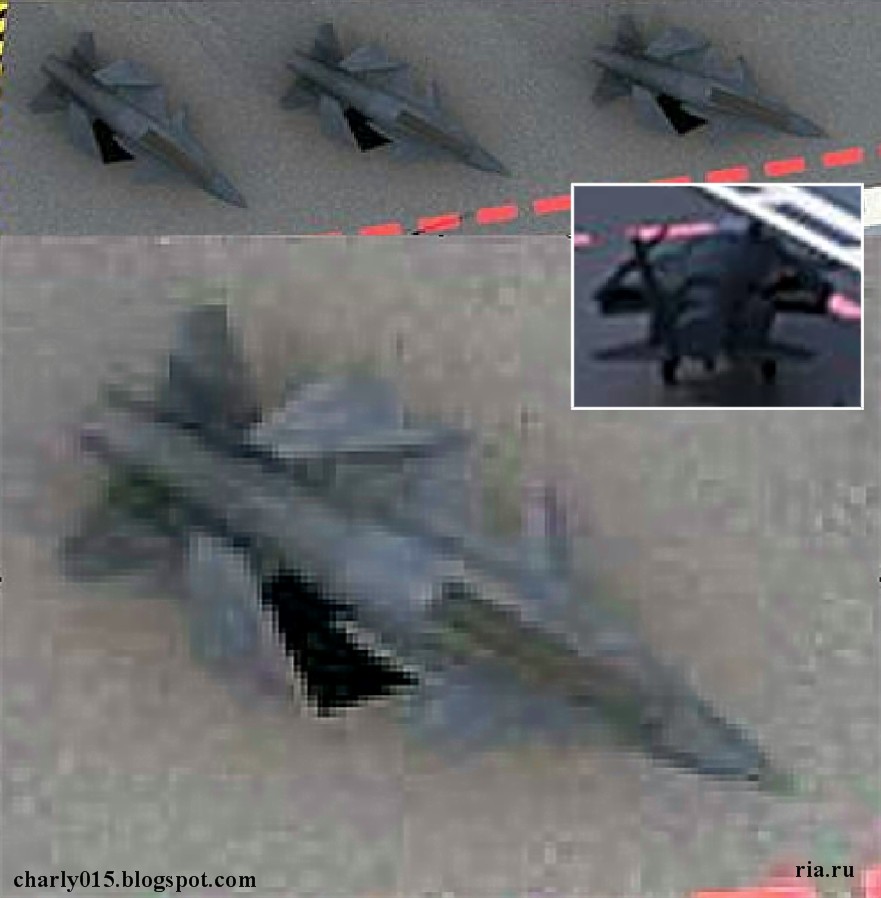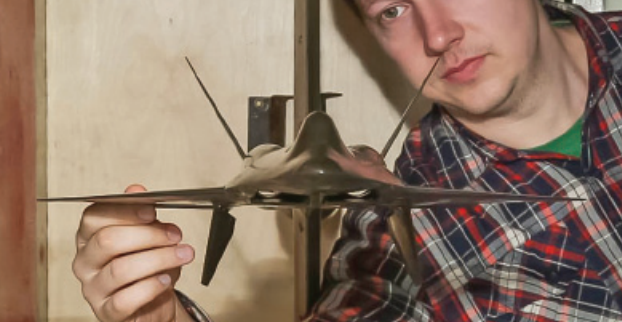When Sukhoi is saying the same Su-57 can be manned or unmanned, as are doing most air forces about their new platforms, do you think there was no engineer involved even in consultations? How do you think they have done the unmanned tests of the plane without their help?
And how many countries around the world have actually implemented such a scheme.... lets take the F-22... the F-22 at 250 million per airframe... they couldn't afford making the manned fighter, let alone lots of drone models.
In such a case I would think the unmanned option would be to operate the F-22s in unmanned modes where the probability of survival is zero.
Separate the human from the machine.
The F-35 would not be affordable either, and how many other international attempts are there that would turn into concrete hardware.
Ironically Russia is the only country making stealth fighters as cheap as western large drones... but even for them it would not make sense to make 50-60 million dollar manned Su-57s and 40-50 million dollar unmanned S-57s.
I would suggest the only sensible reason for being able to fly them unmanned is when the enemy has given up the F-35s and F-15s and F-22s and Rafales and Typhoons as just being too expensive and they start using unmanned drones that can pull enormous g that a manned fighter simply can't match in a dogfight... but even then the manned fighters of today would be of no use because the aircraft are designed for humans so are not intended for more than 9 g... just taking the man out does not make them able to match a drone designed for high g manouvering.
You seem to think that a drone can take 30 g because it is a drone, but you do not realize that a regular fighter cannot GENERATE more than 5 g at high altitude due to aero, not structural constraints.
The point is that a drone based on a platform designed to carry a human wont have the control surface limits and structure to pull much more g than it does and flying high or low g limit is more about speed than altitude... the transition from WWI biplanes to high speed mono planes of WWII was such a shock because in slow little biplanes it would not be possible to turn hard enough to pull more than 4-5g and the speed would bleed off so quickly you couldn't maintain it.
With modern transonic and supersonic drones enormous g can be achieved easily and quickly... a 5 g turn at subsonic speeds can become a 15 g turn at mach 2.
The size of the platform is given by the tons fuel needed for range and tons of payload, not the 100 kg guy inside.
That is very true, but a whole section of the aircraft is dedicated for containing that pilot and keeping him safe while offering him a view of the world and a view of the information collected by sensors and other platforms.
Replacing analog dial instruments with digital instruments and CRT displays... note that is cathode ray tube displays... not much lighter LCD ones in the MiG-29M from 1988 reduced the weight of the cockpit by 500kgs... the ejection seat weighs 250kgs and includes survival equipment and other bits and pieces too and 100kg for the pilot himself... not to mention the weight of the canopy, which is quite heavy compared with aluminium structure.
The point is that the oxygen system and the cooling and heating systems to give him a comfortable operating environment all add up in weight and cost... that would be wasted in a drone design.
Avionics is demanded by the threat, not by the pilot.
Very true but making the pilot aware of the information the Avionics collect requires LCDs and displays and controls and buttons and levers...
Supersonic and high agility requirements are also not a matter of manned or unmanned, once the UCAV portfolio develops you can be sure there will be specialised platforms to take out other UCAVs and then it will not be possible to build only glorified Cessnas with 5 min mean expected life in the battlefield, but you will need fighter-like models capable of holding their own.
I am not disputing that, what I am saying is that basing a drone on a manned version is just stupid, because from a design perspective a manned platform makes a lot of compromises that are not needed in an unmanned drone.
Take an MPA... is a drone replacement going to look like an Orion or a Tu-142 or P-8?
Surely you would save lots of money making an MPA drone based on the current manned model.... that is what you are saying for fighters.
There is an argument that fighters don't need to be super manouverable... they just need to carry enough missiles and let the missiles do the high speed manouvering... for many roles and missions that is probably true... certainly for interception a MiG-31 doesn't need to be manouverable to shoot down strategic bombers and cruise missiles.... speed and range are more important, so fighter drones used for interception in open empty places wont need to perform 30g turns at mach 4...
And of course as explained, once your platform can be manned or unmanned, it is very easy to transition from the current air force structure to the future, strongly unmanned one, because you can do the transition and develop the doctrine and tactics progressively.
Who cares about the transition... it only happens once, and when the enemy threats do it you will rapidly find your dual manned and unmanned fighter is at an enormous disadvantage to a custom designed unmanned one.
Ask yourself why the S-70 and other fighter support drones don't look like current generation fighters... they essentially perform a bomb truck role with air to ground or air to air missiles.... an extra set of eyes and extra munitions for the job.
This is a major practical issue and one that will strongly talk in favour of one same platform with two versions. Also to develop today a manned fighter that cannot be unmanned makes no sense and no airforce would buy it.
What a stupid thing to say or suggest.
The L39, the MiG-23 and MiG-21 and indeed F-4 and F-16 are aircraft that are obsolete, particularly the older models and yet were made in enormous numbers... so it is a popular and common thing to convert them to remote or telecontrol for use as target drones for testing air defence forces.
On land they are doing the same with BMP-3s and other vehicles... because converting manned vehicles into remote control unmanned vehicles is not a 6th or 10th gen technology... it is already something that can be done and done to much older less automated aircraft than the brand new ones of today.
Automatic pilot control systems were invented in WWI... basic, but still functional.
As for PAK-DP, I remind you the most similar example to the engine we are talking about is the RTA based on the YF120. That is an ABVCE based on a VCE designed for the ATF with almost exactly the same flight speeds as hinted for the new interceptor, so you don't need to be very intelligent to see why they talk about izd. 30 in this case.
You don't also need to be very intelligent to recognise this suggestion is coming from the company that makes the damn engine and would have it running vacuum cleaners and washing machines too.
MiG works with Klimov and not Saturn and I would expect Klimov probably has a few engines in mind for the LMFS and the MiG-41.
The rest of the applications are just using the technologies of izd. 30 for other engines, like a 3 stream VCE for 6G planes
I am sure the engine has a bright future from powering fighter aircraft to drones and even land and sea based power generation turbines, but their job is to promote those engines.... I am sure they probably thought the MiG-29 should have had a single Al-31 as its power supply, which might have worked fine, but they would not be selling them to China and Pakistan like they are with the RD-93 they do sell.
Having different engines is not a bad thing except when they are different but almost otherwise identical... like the NK-32 and NK-25.... that makes no sense at all.
There is the massive savings of not having to develop another one...
Saturn don't have to develop any others, Klimov is likely already working on engines for the LMFS and the MiG-41, so no money wasted at all.
I think we have discussed this one million times
You mean like the bullshit about single engined aircraft always being smaller and lighter and cheaper and canards always being better... yet here we are discussing them again...
Nope. It can be done, but again, not without searching further for not so conventional layouts.
You can say that but how about we wait until someone actually achieves it in the real world before we accept it could be true.
Certainly the Americans can't do it.
Wait five to ten years and see what remains of the US sanctions...
Honestly I hope they continue forever... it keeps Russia separated and not cooperating with the west, and shows the west can't compete on equal terms so it is just them cheating.... but their customers suffer, and it forces Russia to look beyond the west for replacement customers.... which is good for Russia.
As said before, TWR and number of engines is unrelated, while the reason for going single engine is precisely costs...
Twin engined aircraft never have half the engine power of a single engined aircraft unless that twin engined aircraft is in a heavy class.
Two medium weight fighters where one is a single engined fighter and the other is a twin engined fighter, the twin engines are normally 2/3rds the power of the single engined fighter engine.
1 × Pratt & Whitney F100-PW-229 afterburning turbofan (for Block 52 version), 17,800 lbf (79 kN) thrust dry, 29,560 lbf (131.5 kN) with afterburner.
2 x General Electric F404-GE-402 afterburning turbofan engines, 11,000 lbf (49 kN) thrust each dry, 17,750 lbf (79.0 kN) with afterburner.
So F-16 = 79 kN dry, and 131.5kN in full AB (the more powerful of the two engine options for the F-16).
The F-18 = 49kN + 49kN = 98kN dry thrust, and 79kN + 79kN = 158kN in AB.
MiG-29 with Al-31 engine would be
75.22kN dry and 122.6kN in AB for the Al-31F of the Su-27SK model
Original MiG-29 with old RD-33 engines to be a fair comparison with Al-31 equipped model:
49.42 dry and 81.58 AB means 98.84 kN dry and 163.16kN in AB.
So the single engined MiG-29 has 75.22kN dry and 122.6kN full AB, while the twin engined actual MiG-29 with RD-33s has 98.84kN in dry thrust and 163.16kN in full AB.
More to the point when the Al-31 gets an improvement that increases the thrust by 1,000kgs, and the RD-33s get improvements that also increase thrust by 1,000kgs, having two engines means the single engined MiG gains 1 ton of extra thrust, but the twin engined MiG gains 2 tons extra thrust.
They did... and BTW the presentation is by UEC so it carries some weight
UEC Saturn... a jet engine maker. Surely they would show the MiG-41 and LMFS with Klimov engines too just to be fair and honest...
But it is not their job to be fair, it is their job to sell Saturn engines... which is what they are doing.
That is a totally unrelated model
Totally unrelated to Saturn... yes, I know.

















 PapaDragon
PapaDragon


